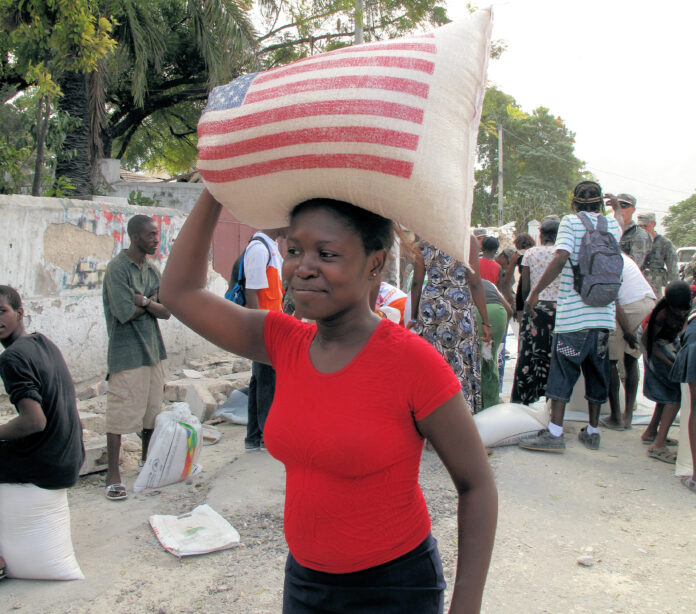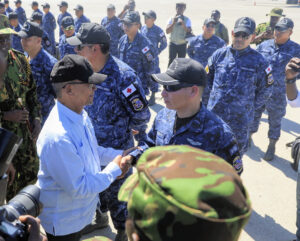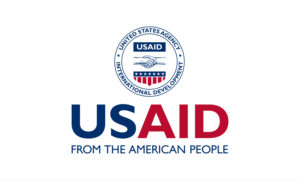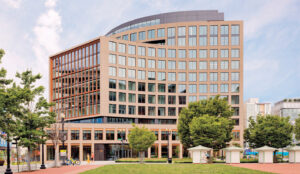
On Feb. 4, the U.S. government froze its contributions to the Multinational Security Support (MSS) mission, a Kenyan-led but mostly U.S.-financed military force concocted by the Biden administration to intervene in Haiti when it couldn’t get the UN Security Council to deploy a regular UN “Peace-Keeping Operation” to the country.
Despite its $600 million annual budget, the MSS has been completely ineffective at improving the efforts of the Haitian National Police (PNH) to fight against Port-au-Prince’s armed neighborhood groups, now united in a coalition which has become the Viv Ansanm (Live Together) Political Party.
The MSS, blessed by the Security Council in October 2023, was supposed to have 2,500 policemen, but as of today it is only 860 (including 70 Salvadoran soldiers who landed in Port-au-Prince on Feb. 4), and much of that shortfall is due to a lack of funding. But that lack became sharper this week, putting the MSS’s future in doubt.
“We have received an official notification from the United States of immediate suspension” of $13.3 million already paid to the UN voluntary fund to support the MSS, said UN spokesperson Stéphane Dujarric.
The fund has only raised a paltry $110 million to date. For the first year of its mandate, the U.S. provided 63% of the MSS’s official $589 million budget.
While freezing the MSS funds was impressive, the most dramatic example of the Trump administration taking a machete to the globalist Deep-State’s sacred cows was its shut-down of the U.S. Agency for International Development (USAID), which plays a giant role in Haiti, providing there “the humanitarian face of colonial exploitation,” as Amanda Yee described in Liberation in 2023. In that article, she profiles some of the soft power agencies that have allowed USAID to become U.S. imperialism’s ringleader in Haiti.
After Haiti’s 2010 earthquake, “by far the largest recipient of USAID funding in Haiti was Washington D.C.-based contractor Chemonics International, [which] received over $200 million to carry out a total of 141 projects,” Yee explains. “In fact, USAID awarded more money to Chemonics than to the entire Haitian government in the wake of the earthquake.… Chemonics to this day remains USAID’s top contractor — the construction company was awarded $506.4 million in contracts in 2021 alone.”
Jake Johnston specializes in tracking U.S. assistance to Haiti and published the following piece on the Center for Economic and Policy Research’s website on Feb. 4. We republish here an abridged version of the original article, which gives an overview of USAID’s central role in Haiti, where its money goes, and the impact Trump’s changes – or reclassifications – might have.
Kim Ives
“We’re shutting it down,” Elon Musk said over the weekend in reference to USAID, the country’s main aid agency, which oversees around $40 billion a year in spending and has been around since the early 1960s. Following two weeks of chaos across the aid industry after the new U.S. administration ordered a 90-day freeze on nearly all foreign assistance, it appears the Trump administration is attempting to move forward with a plan to close the agency and merge its responsibilities with the State Department, though legal challenges are likely.
Speaking on Feb. 3,, Secretary of State Marco Rubio announced that he was serving as acting administrator for the aid agency. “This is not about ending USAID,” Rubio told the press, rather it was aimed at ensuring “everything they do has to be in alignment with the national interest and the foreign policy of the United States.”

Few countries across the world are as dependent on U.S. foreign assistance as Haiti. Last year, I published a book, Aid State, that details the long-term, damaging political ramifications of foreign assistance in Haiti; how aid circumvented the democratic process, eroded sovereignty, undermined local businesses and government, and served more as a benefit to U.S. special interest groups than to the local population. Simply stopping all aid flows overnight, however, will have significant effects in Haiti. According to U.S. officials, there will be a process for organizations providing humanitarian assistance to request waivers that would allow them to continue operating; but the freeze in spending amounted to a stop work order, halting ongoing programs in their tracks.
Since October 2023 (the beginning of FY2024), USAID has obligated $368 million in contracts and grants for activities in Haiti, according to an analysis of data from USASpending.gov. (This figure does not include some overhead costs such as for salaries and benefits.) Many of these awards are for multiyear programs. Coming up with a total figure for the amount of funding impacted by the recent spending freeze is nearly impossible, as it affected monies that had already been disbursed to contractors or grantees. Nevertheless, at a bare minimum — and if no programs were to receive a waiver to continue — the freeze will halt some $330 million in outstanding commitments to ongoing programs.
Local Procurement
Of course, as is the case across the globe, the vast majority of USAID spending goes to organizations or companies not in recipient countries, but right here in the United States. Only 7.6% of USAID’s spending for Haiti since October 2023 went directly to local organizations — though a larger percentage does make it to Haitian organizations through subcontracts, there is not detailed information at this level.
The largest Haitian recipient is the SEROvie Foundation, which provides services to at-risk youth, especially regarding the treatment of HIV/AIDS. The organization has been obligated $8.8 million since October 2023, and the funding freeze will halt at least an additional $2.5 million. Though there is a long-term benefit to reducing reliance on foreign assistance for such services, the halt in funding will have a direct effect on people’s lives — including those employed by the organization, adding to the already impossibly difficult employment situation in Haiti.

But not all local procurement is created equally. The freeze will also affect some $1.4 million in funding for Papyrus S.A., a local firm that runs USAID’s Civil Society Strengthening Program — which works with local organizations to increase their capacity to comply with USAID’s stringent funding requirements. CEPR has argued previously that such endeavors are misguided. Foreign assistance should aim to increase the capacity of local organizations to deliver results, not jump through unnecessary hoops. With the possible closing of USAID, the $7.5 million program which began in the fall of 2022 will be rendered moot.
Funding to UN Agencies
Though there was a time when USAID implemented programs directly, over recent decades the organization has largely been outsourced to contractors and grantees. Given the difficulty of humanitarian access in Haiti in recent years, this has meant an increasing reliance on UN agencies that operate in the country. Of the $368 obligated since the beginning of FY2024, some 40% of that has gone directly to the World Food Programme (WFP), UNICEF, the Pan-American Health Organization, the UN Development Program, the UN Population Fund, the International Organization for Migration (IOM), and the UN Office for the Coordination of Humanitarian Affairs.

In fact, WFP and IOM have been the two largest recipients of USAID funding in recent years. Some of this funding, if cut, will directly affect the Trump administration’s goal of increasing deportations. There is nearly $9 million in undisbursed funds to the IOM for a program aimed at increasing the capacity of Haiti to receive deportees, for example. The IOM also plays a significant role in managing camps for the internally displaced, which now officially hold upward of one million Haitians. The fact that an international entity is providing these services instead of the Haitian government is a real problem, and also a consequence of decades of aid policies that weakened Haiti’s government and outsourced provision of services. But simply ending support for the displaced population is likely to only exacerbate the suffering and encourage even greater migratory flows. Nearly $39 million remains undisbursed for that program.
The WFP is the single largest recipient of USAID funding, having received more than $70 million since the beginning of FY2024. Historically, food assistance has played an instrumental role in undermining local production and decimating Haiti’s farmers — and certain emergency food aid programs, which largely rely on surplus U.S. agricultural commodities, have been exempt from the freeze.
But, unlike most U.S. food assistance, the funding to the WFP includes significant support to local producers. WFP runs a school lunch program in Haiti, which reached nearly half-a-million people last year. In recent years, the share of food purchased locally has increased drastically, and the organization aims to reach 100% locally procured food by 2028. “The government’s goal is for all the food in schools to be locally produced, and we want to help make that happen,” Wanja Kaaria, WFP’s Haiti country director, recently said.
The Beltway Bandits
As USAID became evermore reliant on contractors and grantees, a new crop of companies grew to fill the void. Beginning in the early 2000s, for-profit development companies largely based inside the Beltway — DC, Maryland, and Virginia — rose to prominence and began capturing an ever-larger share of USAID’s budget. One firm, Chemonics International, received some $1.5 billion globally in FY2024. These firms also dominated the post-quake reconstruction era in Haiti. In the 10 years after the earthquake, firms inside the beltway received more than half of all Haiti-related spending. Just two firms combined — Chemonics and Development Alternatives Inc. (DAI) — received more than 20%.

Early in Obama’s first term, the U.S. launched USAID Forward, an ambitious reform program that aimed to break up big contracts consolidated in the hands of just a few firms, such as Chemonics. In response, these for-profit companies banded together to form the Coalition for International Development Companies (CIDC), which then hired a well-connected lobbyist to advocate against these commonsense reforms aimed at improving the delivery of foreign assistance.
Though — at least in Haiti — there has recently been a greater reliance on UN agencies and other multilateral entities, these beltway bandits remain significant players. DAI is currently operating three different programs in Haiti: one aimed at improving water systems, one focused on reforestation, and another in the agricultural sector. There is nearly $25 million committed, but not yet disbursed, to DAI through these three programs.
Tetra Tech, meanwhile, is overseeing a five-year, $24 million program focused on citizen security. There remains nearly $20 million yet to be disbursed. In December 2024, USAID’s largest contractor, Chemonics, received a $25 million contract to implement a program titled “Justice Renewal and Advancement.”
These for-profit entities, however, have an extremely checkered history when it comes to delivering results, while a significant share of the contracts will go directly back to the Beltway in the form of overhead. The CEO of Chemonics, for example, makes an annual salary of $955,000.
Last week, Devex reported that some 3,000 development professionals in the DC-area would likely lose their jobs in the coming weeks.
Political Intervention
Aid is political, whether direct or indirect. USAID specifically has been a pillar of U.S. soft power for more than 60 years. Aid can have long-term structural political effects, as mentioned previously, but there are also more direct political interventions undertaken through USAID. In 2015, CEPR reported that USAID had given some $100,000 of in-kind support to an overtly political organization supporting then candidate Michel Martelly during the 2010/2011 electoral process in Haiti. USAID also provides funding for elections in Haiti.
In September, USAID gave $1 million to the United Nations Development Programme (UNDP), which manages the “basket fund” for donors to provide funding to the Provisional Electoral Council that will manage the upcoming electoral process (currently scheduled for this fall, it would be the first elections in Haiti since 2016). Though nobody questions the need for elections, foreign financing of Haiti’s electoral processes has contributed to the outsourcing of the country’s democracy and has given foreign powers even greater leverage over the nation’s politics.
USAID also awarded a $17 million grant to the Consortium for Elections and Political Process Strengthening, which is composed of three entities: The National Democratic Institute (NDI), the International Republican Institute (IRI) [both arms of the CIA-offshoot National Endowment for Democracy or NED – HL], and the International Foundation for Electoral Systems (IFES). Though accounting for just 3% of USAID’s spending since FY2024, the work of these entities has traditionally been more overtly political — as the consortium’s name indicates. IRI, for example, played a key role in fomenting opposition to the Aristide government in the early 2000s.
Conclusion
The reality is that foreign assistance is designed to promote U.S. interests rather than address the needs of those ostensibly on the receiving end. The changes announced by the Trump administration are not likely to truly disrupt U.S. soft power abroad. If anything, it will make political interventionism an even more explicit aim of U.S. foreign assistance.











[…] USAID Spending in Haiti: Where Does the Money Go? Haiti Liberte […]
[…] the aid agency. “This is not about ending USAID,” Rubio told the press, rather it was aimed at ensuring “everything they do has to be in alignment with the national interest and the foreign policy of […]